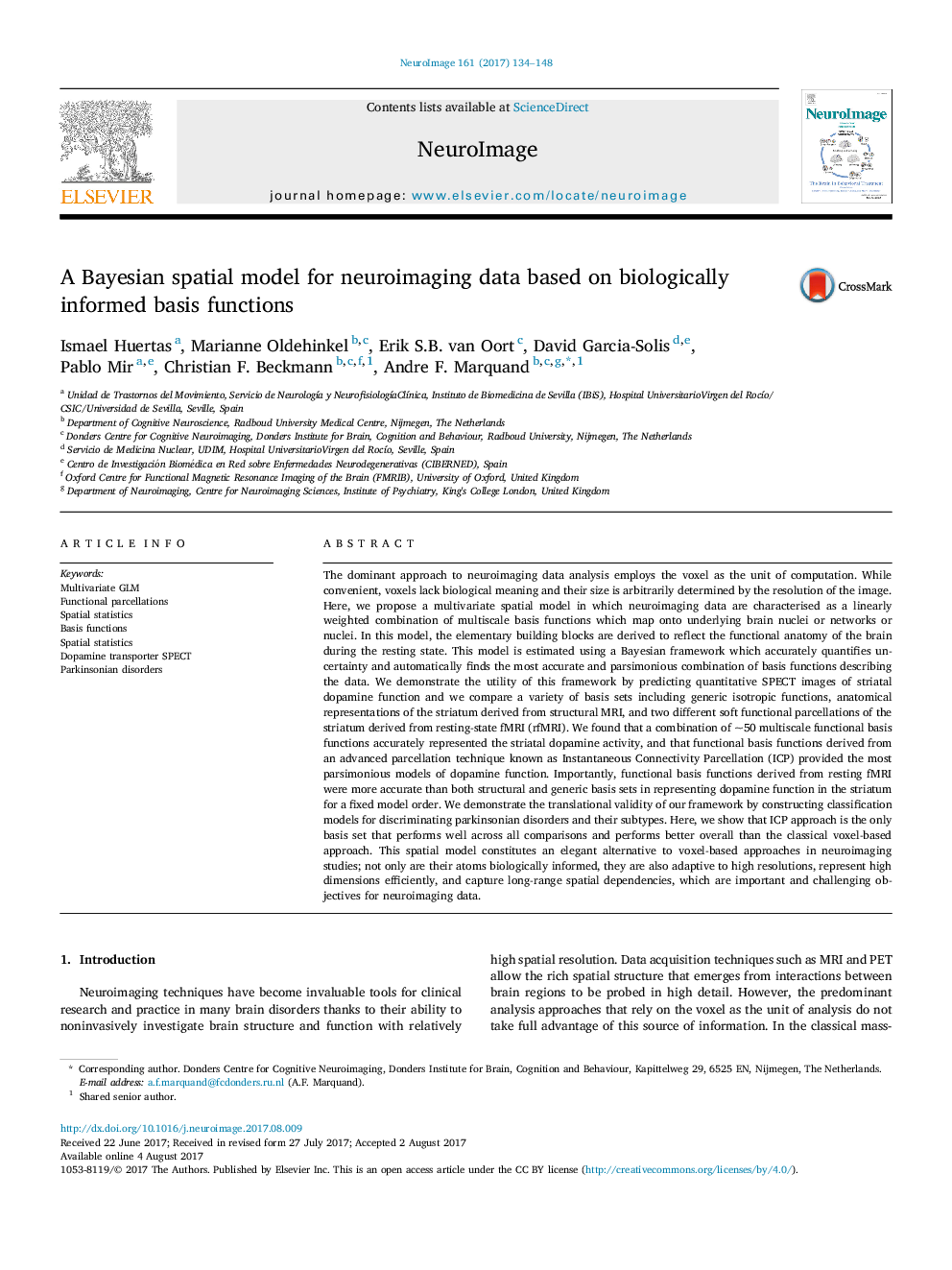| کد مقاله | کد نشریه | سال انتشار | مقاله انگلیسی | نسخه تمام متن |
|---|---|---|---|---|
| 5630817 | 1580849 | 2017 | 15 صفحه PDF | دانلود رایگان |
- A multivariate spatial model using brain parcellations as basis functions is proposed.
- Brain regions can be modeled as a superposition of multiscale basis functions.
- These basis functions are biologically meaningful and capture spatial dependencies.
- Our framework allows to develop accurate and parsimonious clinical models.
- The model is computationally efficient, enhances power and adapts to high resolutions.
The dominant approach to neuroimaging data analysis employs the voxel as the unit of computation. While convenient, voxels lack biological meaning and their size is arbitrarily determined by the resolution of the image. Here, we propose a multivariate spatial model in which neuroimaging data are characterised as a linearly weighted combination of multiscale basis functions which map onto underlying brain nuclei or networks or nuclei. In this model, the elementary building blocks are derived to reflect the functional anatomy of the brain during the resting state. This model is estimated using a Bayesian framework which accurately quantifies uncertainty and automatically finds the most accurate and parsimonious combination of basis functions describing the data. We demonstrate the utility of this framework by predicting quantitative SPECT images of striatal dopamine function and we compare a variety of basis sets including generic isotropic functions, anatomical representations of the striatum derived from structural MRI, and two different soft functional parcellations of the striatum derived from resting-state fMRI (rfMRI). We found that a combination of â¼50 multiscale functional basis functions accurately represented the striatal dopamine activity, and that functional basis functions derived from an advanced parcellation technique known as Instantaneous Connectivity Parcellation (ICP) provided the most parsimonious models of dopamine function. Importantly, functional basis functions derived from resting fMRI were more accurate than both structural and generic basis sets in representing dopamine function in the striatum for a fixed model order. We demonstrate the translational validity of our framework by constructing classification models for discriminating parkinsonian disorders and their subtypes. Here, we show that ICP approach is the only basis set that performs well across all comparisons and performs better overall than the classical voxel-based approach. This spatial model constitutes an elegant alternative to voxel-based approaches in neuroimaging studies; not only are their atoms biologically informed, they are also adaptive to high resolutions, represent high dimensions efficiently, and capture long-range spatial dependencies, which are important and challenging objectives for neuroimaging data.
Journal: NeuroImage - Volume 161, 1 November 2017, Pages 134-148
